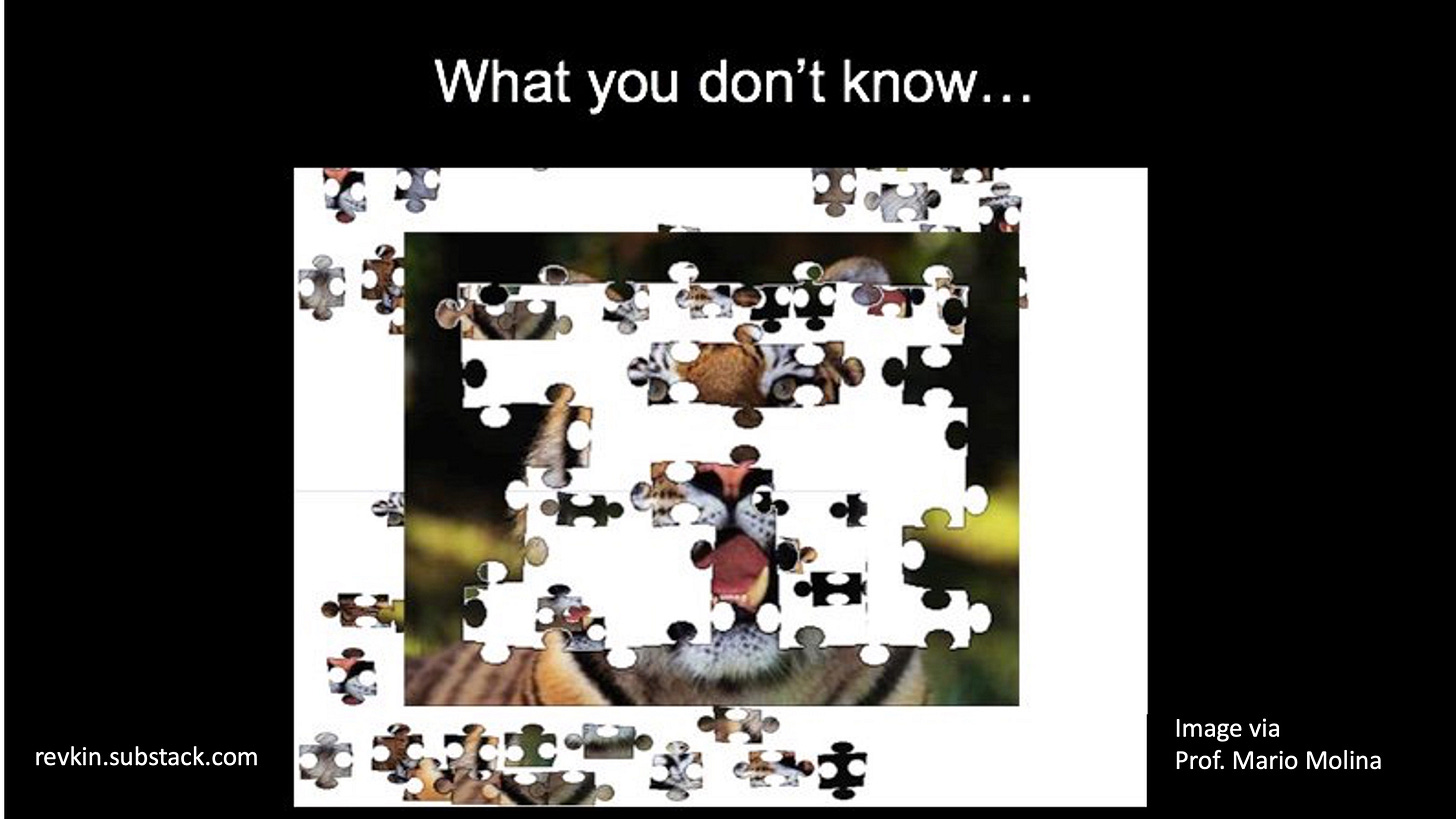Recalling Mario Molina, a Nobel-Winning Defender of a Livable Atmosphere and Climate
Today would have been the 80th birthday of one of the discoverers of the chemical threat to the ozone layer and a lifelong pursuer of cleaner air and a livable climate.
I almost missed that March 19 marked the 80th anniversary of the birth of the late Nobel-winning atmospheric chemist Mario J. Molina - until I saw this tweet from Durwood Zaelke, a longtime advocate and expert driving action cutting synthetic compounds that harm the ozone layer and, more recently, focused on heat-trapping methane.


Zaelke, in turn, was promptedby a Google Doodle of Molina, who shared the 1995 Nobel Prize in chemistry with Paul J. Crutzen and F. Sherwood Rowland for their work identifying how a family of synthetic compounds could damage Earth’s protective ozone shield. As you undoubtedly know, the early work of these researchers and others - including Susan Solomon, James Lovelock, and Ralph Cicerone - has led to the slow healing of that molecular veil.

Along with his insights and leadership as an atmospheric scientist and air-pollution fighter, Molina was a fine risk communicator. I've used his jigsaw-puzzle tiger in many talks.
Read Molina’s 2010 testimony at a House hearing on climate change for more. The hearing was held after foes of clean-energy action zoomed in on some glitches in the 2007 reports from the Intergovernmental Panel on Climate Change. (As it happens, on Monday March 20th, the IPCC is issuing the final synthesis report drawing together threads of understanding revealed in its Sixth Assessment of the state of science on climate change and choices.)
Here’s an excerpt, which you should read keeping in mind this was the state of the science in 2010):
There appears to be a gross misunderstanding of the nature of climate change science among those that have attempted to discredit it. They convey the idea that the science in question behaves like a house of cards: if you remove just one of them, the whole structure falls apart. However, this is certainly not the way the science of complex systems has evolved.
A much better analogy is a jigsaw puzzle: many pieces are missing, and some might even be in the wrong place, but there is little doubt that the overall image is clear, namely that climate change is a serious threat that needs to be urgently addressed….
The existing body of climate science, while not comprehensive and with still many questions to be answered, is robust and extensive, and is based on many hundreds of studies conducted by thousands of highly trained scientists, with transparent methodologies, publication in public journals with rigorous peer review, etc.
And this is precisely the information that society and decision makers in government need in order to assess the risk associated with the continued emissions of greenhouse gases.
Here’s to Mario Molina, a wonderful scientist and human being taken from the world far too soon, by a 2020 heart attack. You can get a sense of his character in this humble reflection after President Obama gave him the Presidential Medal of Freedom in 2013.
Follow the work of the Centro Mario Molina for more.








Andy — thank you for this appreciative, personal reflection on Molino and colleagues. In a media world of almost constant criticism and outrage, it is important to offer appreciation for those who stand out for their public service and contributions to society.